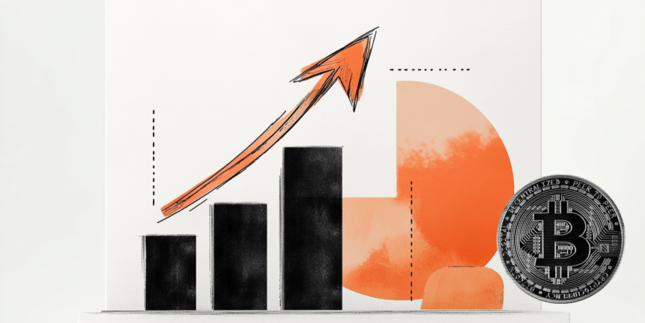- Indian Rupee loses traction amid the mixed sentiment.
- Economists noted that GDP growth in July-September will be higher than the RBI's prediction of 6.5%.
- Investors will monitor the US Building Permits and Housing Starts on Friday.
Indian Rupee (INR) trades cautiously on the day. A report in the Reserve Bank of India’s monthly bulletin said festival-related demand in India has been "ebullient" and consumer sentiment is upbeat. However, there were "miles to go" on the inflation front, and India is "not out of the woods yet”.
There is a wide consensus supported by economists that Indian GDP growth in the third quarter (Q3) 2023-24 will outperform the projections of the central bank. Nonetheless, the Indian Rupee remains vulnerable to higher crude prices and US Treasury bond yields. Later on Friday, market players will monitor the US housing data, including Building Permits and Housing Starts.
Daily Digest Market Movers: Indian Rupee remains sensitive to global factors
- The momentum of the change in India’s GDP is sequentially expected to be higher in the third quarter of 2023-24, with festival demand remaining ebullient, according to a report in the Reserve Bank of India’s monthly bulletin.
- RBI forecasts the Indian economy to post a GDP growth rate of 6.5% in 2023-24.
- The Reserve Bank of India (RBI) is likely to leave the policy rate unchanged at its next monetary policy meeting scheduled for December 6-8.
- India's trade deficit widened to $31.46B in October from $19.37B in the previous month due to a sharp rise in gold imports during the festival season.
- India’s Exports grew by 6.2% to $33.57B in October from $34.47B in September. Imports climbed to $65.03B from the previous month's $ 53.84 B.
- India’s headline retail price inflation dropped to 4.9% in October from 5% the previous month, the lowest level in four months.
- India’s Wholesale Price Index (WPI) inflation came in at -0.52% from the previous reading of -0.26%, worse than the market expectation of -0.20%.
- India’s Consumer Price Index (CPI) grew by 4.87% YoY in October versus 5.02% prior, beating the market consensus of 4.80%.
- The weekly US Initial Claims reached the highest level in nearly three months, climbing by 231K. The Continuing Jobless Claims reached the highest level since 2022.
- The US Industrial Production fell 0.6% MoM in October from a 0.1% rise in the previous month, below the market estimation.
- Fed fund futures are now pricing no further US rate hikes in this cycle, and expect a rate cut by the middle of 2024.
Technical Analysis: The Indian Rupee maintains a bearish outlook
The Indian Rupee edges lower on the day. The USD/INR pair has traded between 82.80 and 83.35 in a wider trading band since September. Technically, the USD/INR keeps the bullish stance as the pair holds above the key 100-day Exponential Moving Average (EMA) on the daily chart.
That being said, the upper boundary of the trading range of 83.35 acts as the immediate resistance level for the pair. The continuation of the upward bias could see the rally to a year-to-date (YTD) high of 83.47. A decisive break would expose the psychological round figure at 84.00.
On the other hand, the initial support level for USD/INR is located near a low of September 12 at 82.80. If sellers push prices below that level, the next contention to watch is a low of August 11 at 82.60, followed by a low of August 24 at 82.37.
US Dollar price today
The table below shows the percentage change of US Dollar (USD) against listed major currencies today. US Dollar was the strongest against the New Zealand Dollar.
| USD | EUR | GBP | CAD | AUD | JPY | NZD | CHF | |
| USD | 0.01% | -0.01% | -0.01% | -0.01% | -0.06% | 0.16% | -0.02% | |
| EUR | -0.01% | -0.02% | -0.03% | -0.03% | -0.06% | 0.14% | -0.02% | |
| GBP | 0.00% | 0.00% | -0.03% | -0.03% | -0.06% | 0.15% | -0.02% | |
| CAD | 0.02% | 0.07% | 0.03% | 0.04% | -0.02% | 0.18% | 0.01% | |
| AUD | 0.01% | 0.03% | 0.00% | 0.00% | -0.03% | 0.18% | 0.00% | |
| JPY | 0.06% | 0.08% | 0.06% | 0.05% | 0.04% | 0.20% | 0.03% | |
| NZD | -0.15% | -0.14% | -0.15% | -0.16% | -0.16% | -0.20% | -0.17% | |
| CHF | 0.01% | 0.02% | 0.00% | -0.02% | -0.01% | -0.05% | 0.16% |
The heat map shows percentage changes of major currencies against each other. The base currency is picked from the left column, while the quote currency is picked from the top row. For example, if you pick the Euro from the left column and move along the horizontal line to the Japanese Yen, the percentage change displayed in the box will represent EUR (base)/JPY (quote).
Indian Rupee FAQs
What are the key factors driving the Indian Rupee?
The Indian Rupee (INR) is one of the most sensitive currencies to external factors. The price of Crude Oil (the country is highly dependent on imported Oil), the value of the US Dollar – most trade is conducted in USD – and the level of foreign investment, are all influential. Direct intervention by the Reserve Bank of India (RBI) in FX markets to keep the exchange rate stable, as well as the level of interest rates set by the RBI, are further major influencing factors on the Rupee.
How do the decisions of the Reserve Bank of India impact the Indian Rupee?
The Reserve Bank of India (RBI) actively intervenes in forex markets to maintain a stable exchange rate, to help facilitate trade. In addition, the RBI tries to maintain the inflation rate at its 4% target by adjusting interest rates. Higher interest rates usually strengthen the Rupee. This is due to the role of the ‘carry trade’ in which investors borrow in countries with lower interest rates so as to place their money in countries’ offering relatively higher interest rates and profit from the difference.
What macroeconomic factors influence the value of the Indian Rupee?
Macroeconomic factors that influence the value of the Rupee include inflation, interest rates, the economic growth rate (GDP), the balance of trade, and inflows from foreign investment. A higher growth rate can lead to more overseas investment, pushing up demand for the Rupee. A less negative balance of trade will eventually lead to a stronger Rupee. Higher interest rates, especially real rates (interest rates less inflation) are also positive for the Rupee. A risk-on environment can lead to greater inflows of Foreign Direct and Indirect Investment (FDI and FII), which also benefit the Rupee.
How does inflation impact the Indian Rupee?
Higher inflation, particularly, if it is comparatively higher than India’s peers, is generally negative for the currency as it reflects devaluation through oversupply. Inflation also increases the cost of exports, leading to more Rupees being sold to purchase foreign imports, which is Rupee-negative. At the same time, higher inflation usually leads to the Reserve Bank of India (RBI) raising interest rates and this can be positive for the Rupee, due to increased demand from international investors. The opposite effect is true of lower inflation.
Information on these pages contains forward-looking statements that involve risks and uncertainties. Markets and instruments profiled on this page are for informational purposes only and should not in any way come across as a recommendation to buy or sell in these assets. You should do your own thorough research before making any investment decisions. FXStreet does not in any way guarantee that this information is free from mistakes, errors, or material misstatements. It also does not guarantee that this information is of a timely nature. Investing in Open Markets involves a great deal of risk, including the loss of all or a portion of your investment, as well as emotional distress. All risks, losses and costs associated with investing, including total loss of principal, are your responsibility. The views and opinions expressed in this article are those of the authors and do not necessarily reflect the official policy or position of FXStreet nor its advertisers. The author will not be held responsible for information that is found at the end of links posted on this page.
If not otherwise explicitly mentioned in the body of the article, at the time of writing, the author has no position in any stock mentioned in this article and no business relationship with any company mentioned. The author has not received compensation for writing this article, other than from FXStreet.
FXStreet and the author do not provide personalized recommendations. The author makes no representations as to the accuracy, completeness, or suitability of this information. FXStreet and the author will not be liable for any errors, omissions or any losses, injuries or damages arising from this information and its display or use. Errors and omissions excepted.
The author and FXStreet are not registered investment advisors and nothing in this article is intended to be investment advice.
Recommended content
Editors’ Picks

Gold nears $3,400; fresh record highs and counting amid USD sell-off
Gold price closes in on $3,400 as the record rally regains strength on Easter Monday. Concerns over US-China trade war escalation and the Fed’s independence smash the US Dollar to three-year troughs. RSI stays overbought on the daily chart, with thin volumes likely to exaggerate moves in Gold price.

EUR/USD extends rally toward 1.1600 as US Dollar keeps falling
EUR/USD trades roughly 1.5% higher so far this Monday as the relentless US Dollar selling drives it toward the 1.1600 threshold - the highest level since November 2021. Growing concerns over a US economic recession and the Federal Reserve’s autonomy continue to exert downward pressure on the USD.

GBP/USD surges past 1.3400 on intense US Dollar weakness
GBP/USD continues its winning streak, recapturing 1.3400 in European trading on Monday. The extended US Dollar weakness, amid US-Sino trade war-led recession fears and heightened threat to the Fed's independence, continue to underpin the pair. Thin trading is set to extend.

How to make sense of crypto recovery – Is it a buy or fakeout
Bitcoin (BTC), Ethereum (ETH) and XRP, the top three cryptocurrencies by market capitalization, extend their last week’s recovery on Monday, even as trader sentiment is hurt by the US President Donald Trump’s tariff policy and announcements.

Five fundamentals for the week: Traders confront the trade war, important surveys, key Fed speech Premium
Will the US strike a trade deal with Japan? That would be positive progress. However, recent developments are not that positive, and there's only one certainty: headlines will dominate markets. Fresh US economic data is also of interest.

The Best brokers to trade EUR/USD
SPONSORED Discover the top brokers for trading EUR/USD in 2025. Our list features brokers with competitive spreads, fast execution, and powerful platforms. Whether you're a beginner or an expert, find the right partner to navigate the dynamic Forex market.



